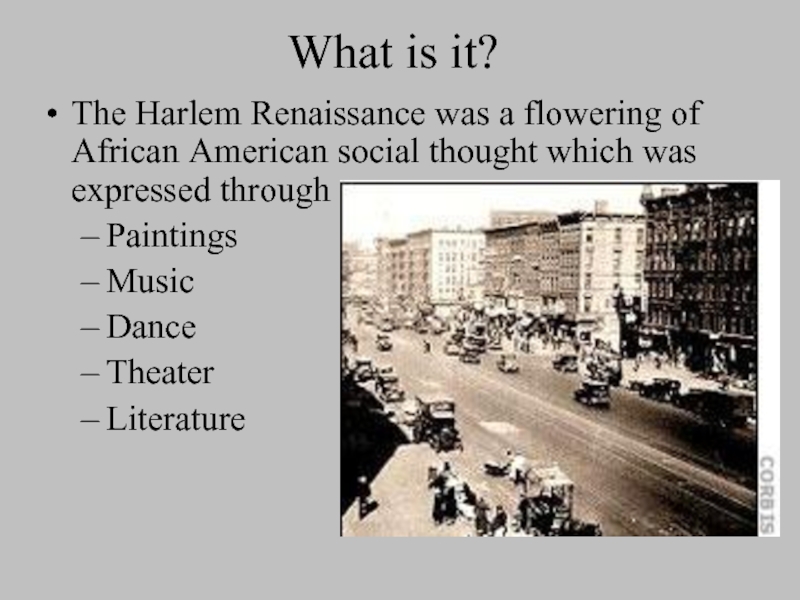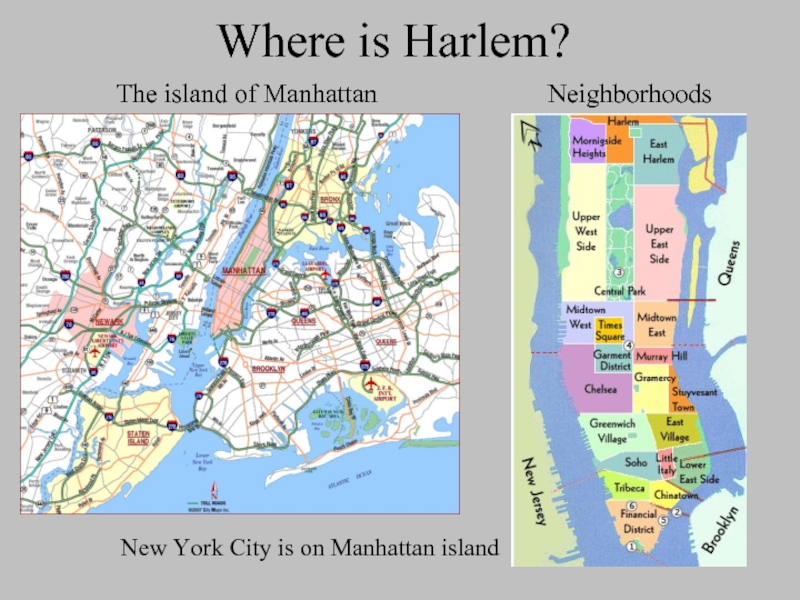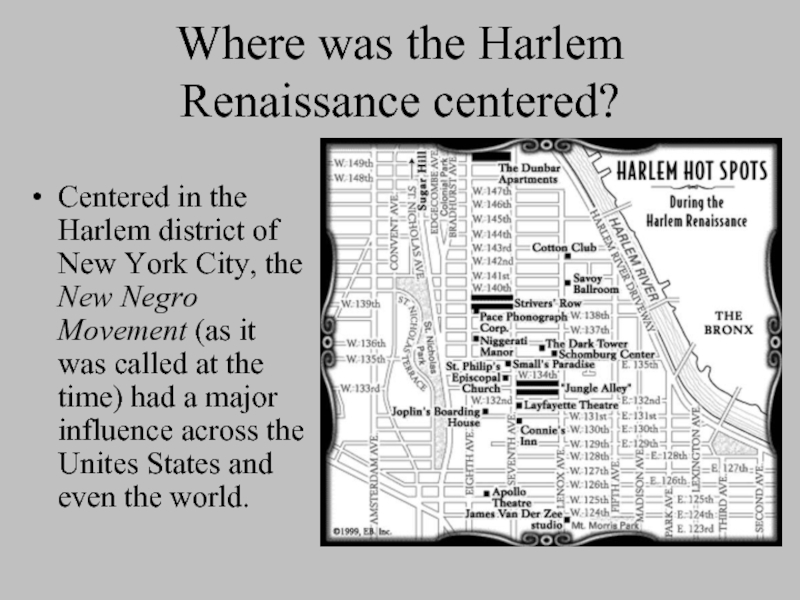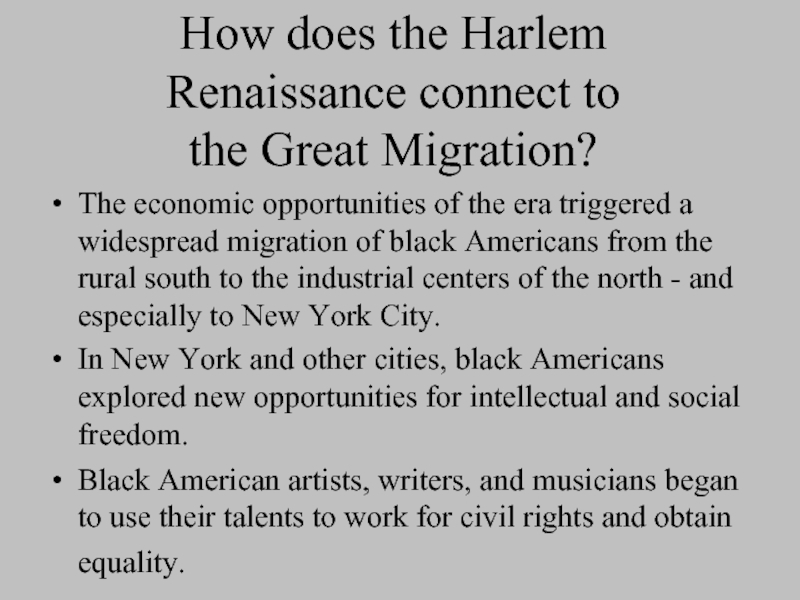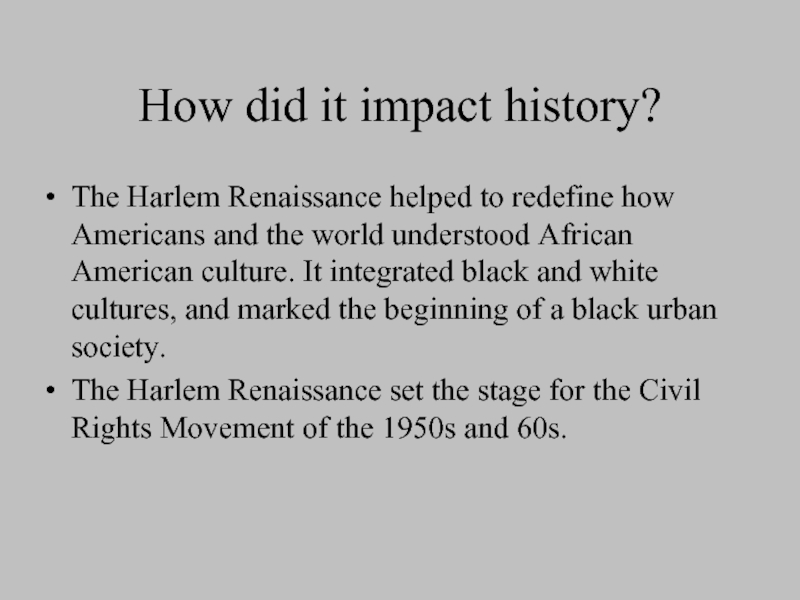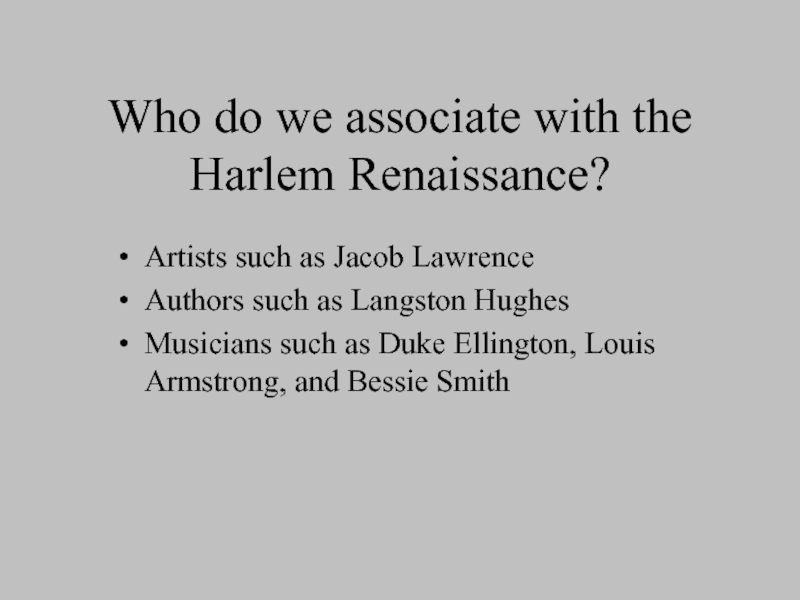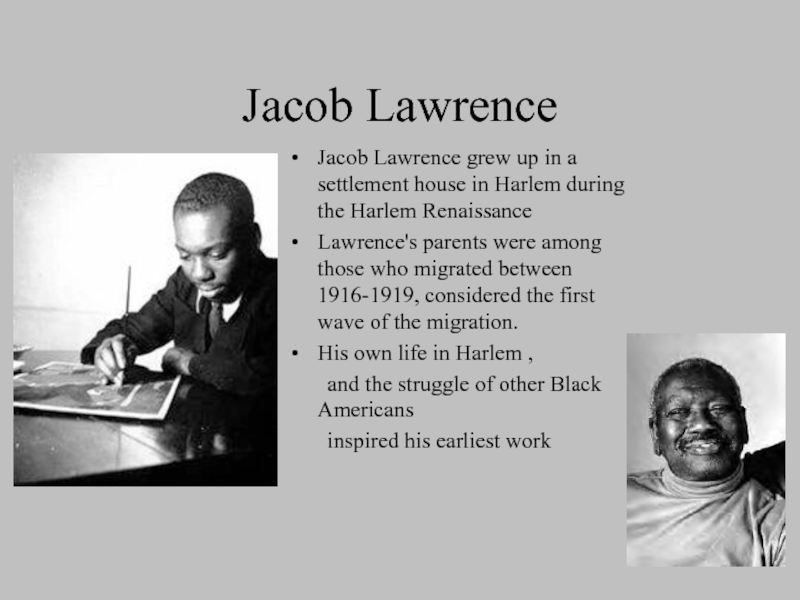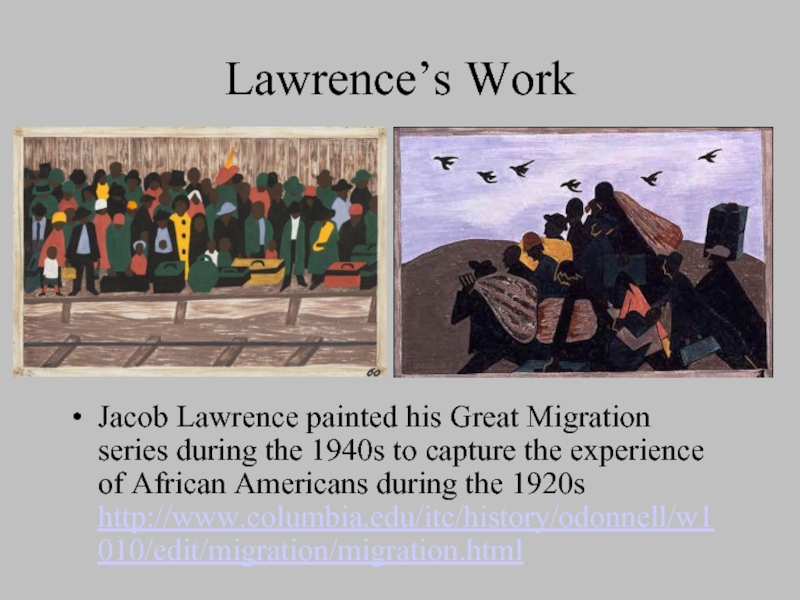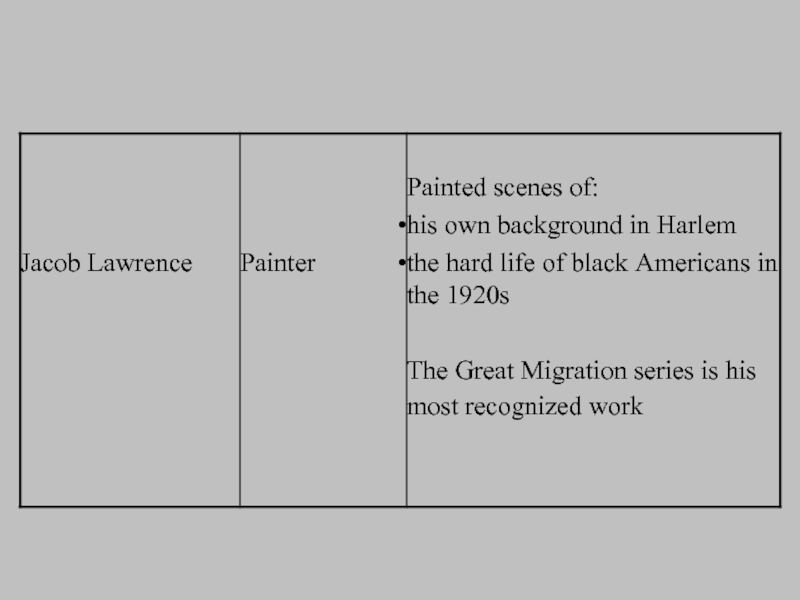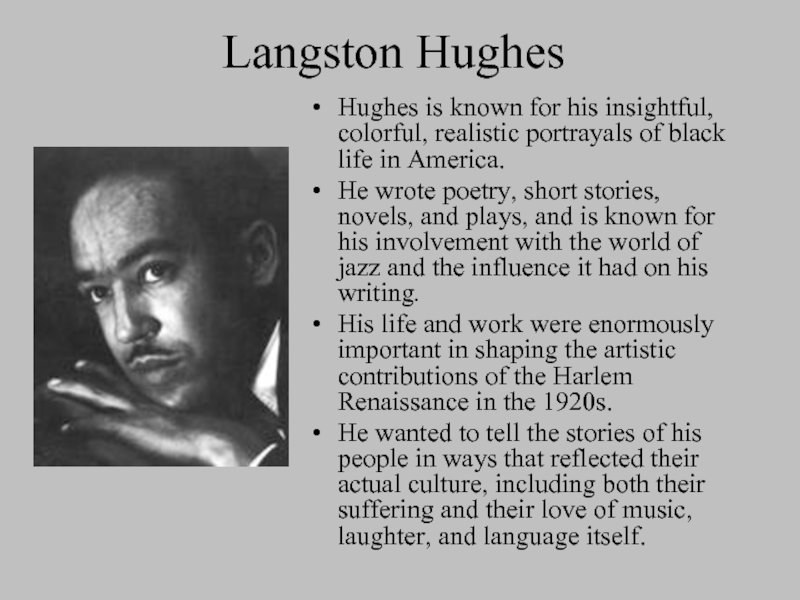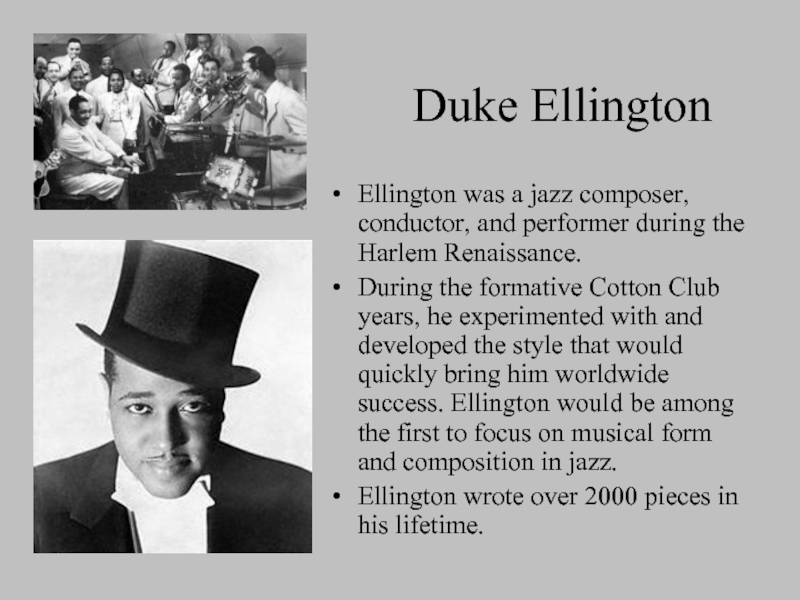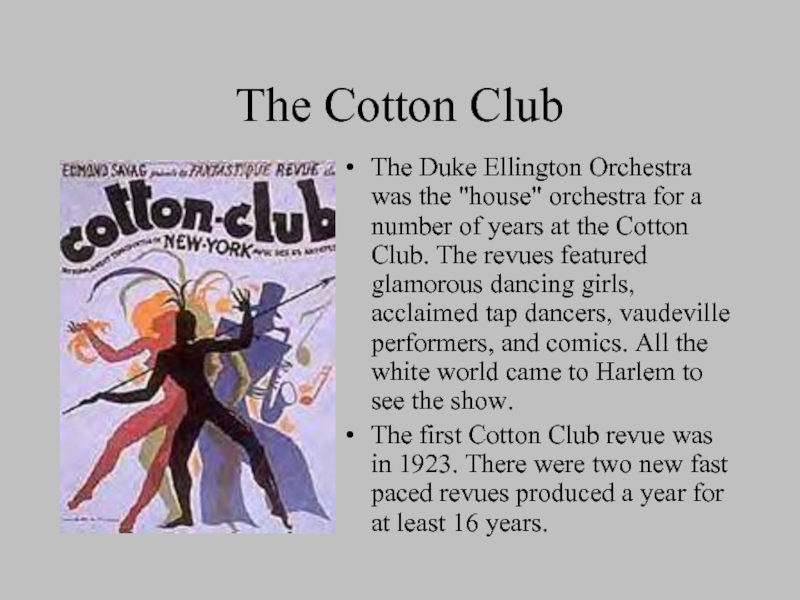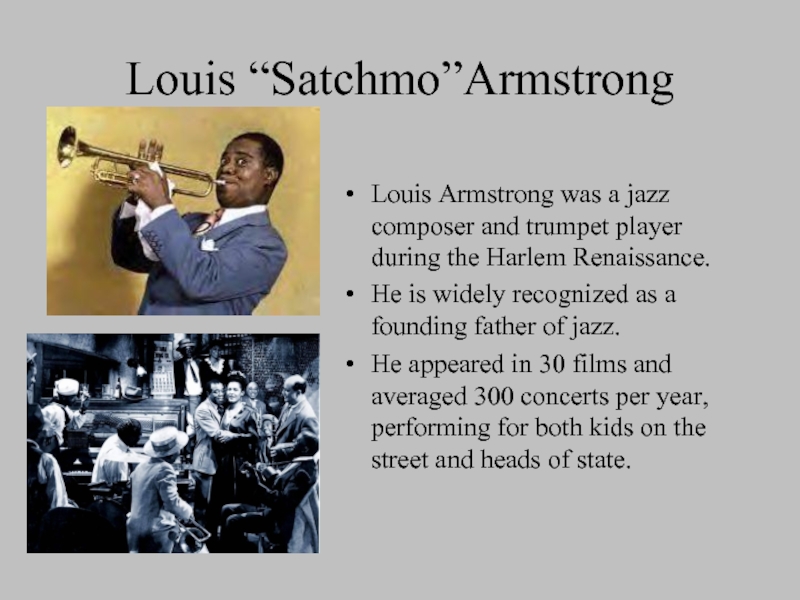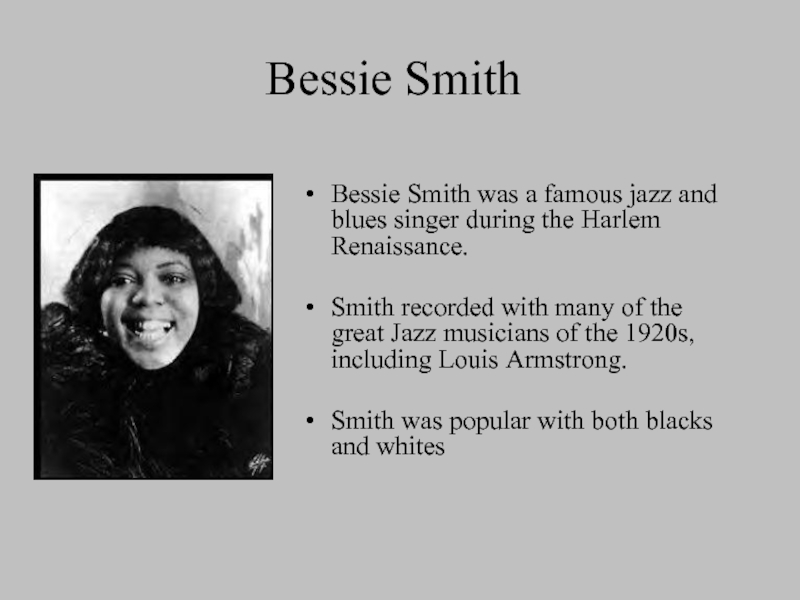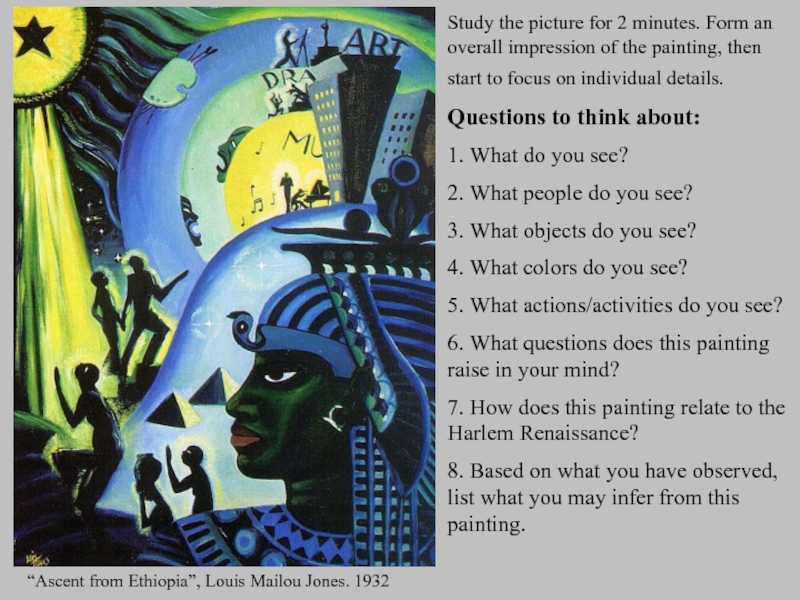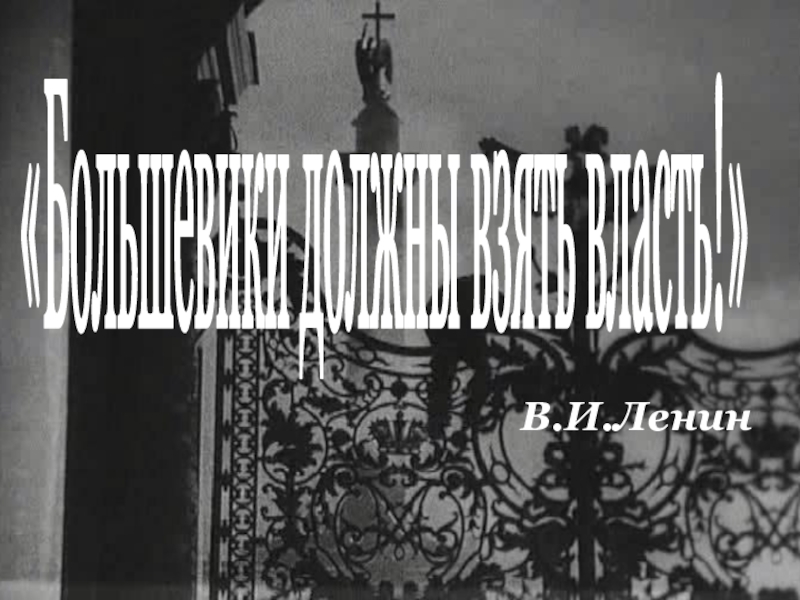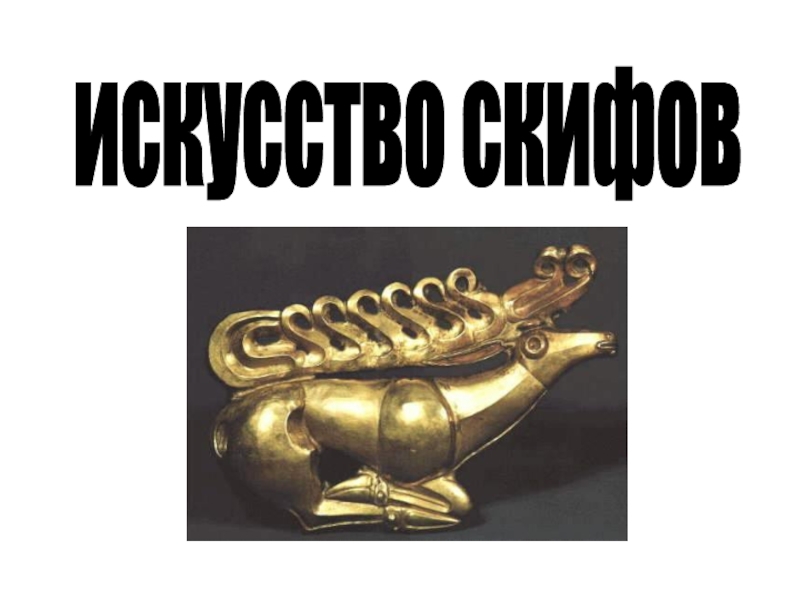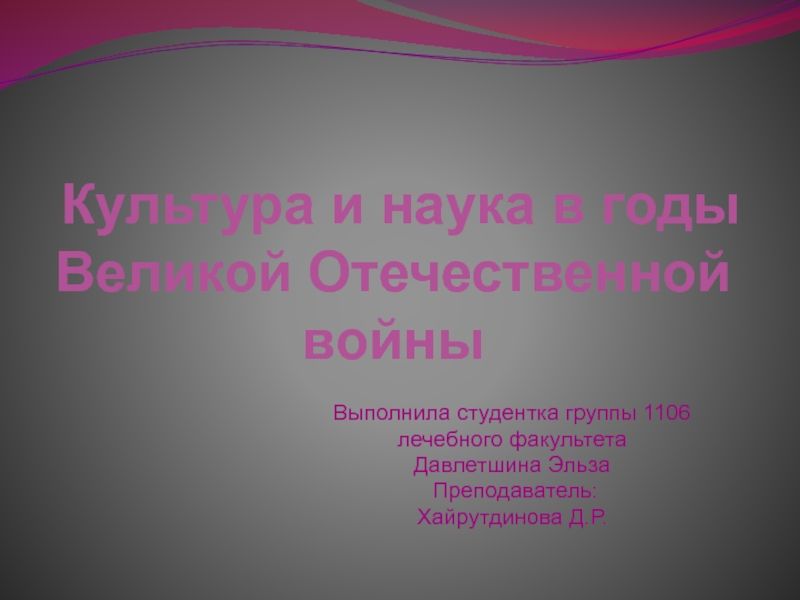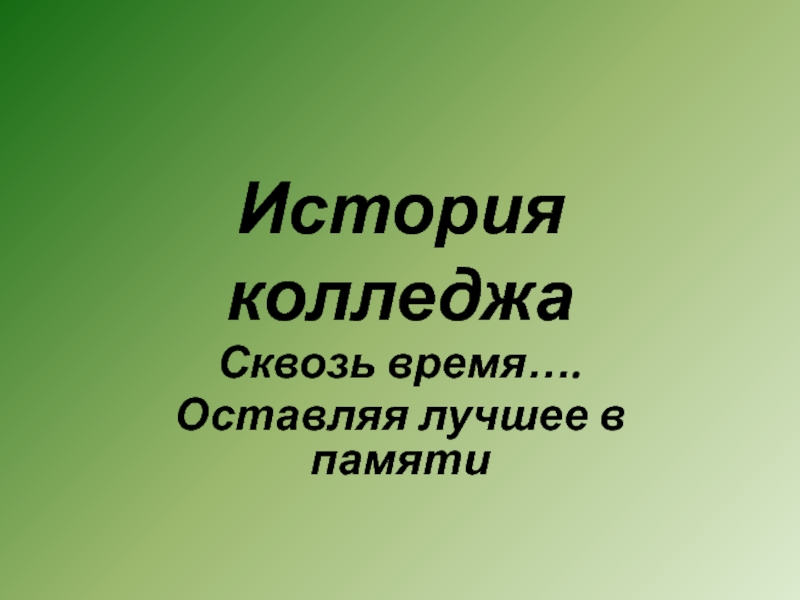social thought which was expressed through
Paintings
Music
Dance
Theater
Literature
- Главная
- Разное
- Дизайн
- Бизнес и предпринимательство
- Аналитика
- Образование
- Развлечения
- Красота и здоровье
- Финансы
- Государство
- Путешествия
- Спорт
- Недвижимость
- Армия
- Графика
- Культурология
- Еда и кулинария
- Лингвистика
- Английский язык
- Астрономия
- Алгебра
- Биология
- География
- Детские презентации
- Информатика
- История
- Литература
- Маркетинг
- Математика
- Медицина
- Менеджмент
- Музыка
- МХК
- Немецкий язык
- ОБЖ
- Обществознание
- Окружающий мир
- Педагогика
- Русский язык
- Технология
- Физика
- Философия
- Химия
- Шаблоны, картинки для презентаций
- Экология
- Экономика
- Юриспруденция
Where was the Harlem Renaissance centered презентация
Содержание
- 1. Where was the Harlem Renaissance centered
- 2. Where is Harlem? The
- 3. Where was the Harlem Renaissance centered? Centered
- 4. How does the Harlem Renaissance connect to
- 5. How did it impact history? The Harlem
- 6. Who do we associate with the Harlem
- 7. Jacob Lawrence Jacob Lawrence grew up in
- 8. Lawrence’s Work Jacob Lawrence painted his Great
- 10. Langston Hughes Hughes is known for his
- 11. Duke Ellington Ellington was a jazz
- 12. The Cotton Club The Duke Ellington Orchestra
- 13. Louis “Satchmo”Armstrong Louis Armstrong was a jazz
- 14. Bessie Smith Bessie Smith was a famous
- 15. “Ascent from Ethiopia”, Louis Mailou Jones.
Слайд 3Where was the Harlem Renaissance centered?
Centered in the Harlem district of
New York City, the New Negro Movement (as it was called at the time) had a major influence across the Unites States and even the world.
Слайд 4How does the Harlem Renaissance connect to
the Great Migration?
The economic
opportunities of the era triggered a widespread migration of black Americans from the rural south to the industrial centers of the north - and especially to New York City.
In New York and other cities, black Americans explored new opportunities for intellectual and social freedom.
Black American artists, writers, and musicians began to use their talents to work for civil rights and obtain equality.
In New York and other cities, black Americans explored new opportunities for intellectual and social freedom.
Black American artists, writers, and musicians began to use their talents to work for civil rights and obtain equality.
Слайд 5How did it impact history?
The Harlem Renaissance helped to redefine how
Americans and the world understood African American culture. It integrated black and white cultures, and marked the beginning of a black urban society.
The Harlem Renaissance set the stage for the Civil Rights Movement of the 1950s and 60s.
The Harlem Renaissance set the stage for the Civil Rights Movement of the 1950s and 60s.
Слайд 6Who do we associate with the Harlem Renaissance?
Artists such as Jacob
Lawrence
Authors such as Langston Hughes
Musicians such as Duke Ellington, Louis Armstrong, and Bessie Smith
Authors such as Langston Hughes
Musicians such as Duke Ellington, Louis Armstrong, and Bessie Smith
Слайд 7Jacob Lawrence
Jacob Lawrence grew up in a settlement house in Harlem
during the Harlem Renaissance
Lawrence's parents were among those who migrated between 1916-1919, considered the first wave of the migration.
His own life in Harlem ,
and the struggle of other Black Americans
inspired his earliest work
Lawrence's parents were among those who migrated between 1916-1919, considered the first wave of the migration.
His own life in Harlem ,
and the struggle of other Black Americans
inspired his earliest work
Слайд 8Lawrence’s Work
Jacob Lawrence painted his Great Migration series during the 1940s
to capture the experience of African Americans during the 1920s http://www.columbia.edu/itc/history/odonnell/w1010/edit/migration/migration.html
Слайд 10Langston Hughes
Hughes is known for his insightful, colorful, realistic portrayals of
black life in America.
He wrote poetry, short stories, novels, and plays, and is known for his involvement with the world of jazz and the influence it had on his writing.
His life and work were enormously important in shaping the artistic contributions of the Harlem Renaissance in the 1920s.
He wanted to tell the stories of his people in ways that reflected their actual culture, including both their suffering and their love of music, laughter, and language itself.
He wrote poetry, short stories, novels, and plays, and is known for his involvement with the world of jazz and the influence it had on his writing.
His life and work were enormously important in shaping the artistic contributions of the Harlem Renaissance in the 1920s.
He wanted to tell the stories of his people in ways that reflected their actual culture, including both their suffering and their love of music, laughter, and language itself.
Слайд 11 Duke Ellington
Ellington was a jazz composer, conductor, and performer during
the Harlem Renaissance.
During the formative Cotton Club years, he experimented with and developed the style that would quickly bring him worldwide success. Ellington would be among the first to focus on musical form and composition in jazz.
Ellington wrote over 2000 pieces in his lifetime.
During the formative Cotton Club years, he experimented with and developed the style that would quickly bring him worldwide success. Ellington would be among the first to focus on musical form and composition in jazz.
Ellington wrote over 2000 pieces in his lifetime.
Слайд 12The Cotton Club
The Duke Ellington Orchestra was the "house" orchestra for
a number of years at the Cotton Club. The revues featured glamorous dancing girls, acclaimed tap dancers, vaudeville performers, and comics. All the white world came to Harlem to see the show.
The first Cotton Club revue was in 1923. There were two new fast paced revues produced a year for at least 16 years.
The first Cotton Club revue was in 1923. There were two new fast paced revues produced a year for at least 16 years.
Слайд 13Louis “Satchmo”Armstrong
Louis Armstrong was a jazz composer and trumpet player during
the Harlem Renaissance.
He is widely recognized as a founding father of jazz.
He appeared in 30 films and averaged 300 concerts per year, performing for both kids on the street and heads of state.
He is widely recognized as a founding father of jazz.
He appeared in 30 films and averaged 300 concerts per year, performing for both kids on the street and heads of state.
Слайд 14Bessie Smith
Bessie Smith was a famous jazz and blues singer during
the Harlem Renaissance.
Smith recorded with many of the great Jazz musicians of the 1920s, including Louis Armstrong.
Smith was popular with both blacks and whites
Smith recorded with many of the great Jazz musicians of the 1920s, including Louis Armstrong.
Smith was popular with both blacks and whites
Слайд 15
“Ascent from Ethiopia”, Louis Mailou Jones. 1932
Study the picture for 2
minutes. Form an overall impression of the painting, then start to focus on individual details.
Questions to think about:
1. What do you see?
2. What people do you see?
3. What objects do you see?
4. What colors do you see?
5. What actions/activities do you see?
6. What questions does this painting raise in your mind?
7. How does this painting relate to the Harlem Renaissance?
8. Based on what you have observed, list what you may infer from this painting.
Questions to think about:
1. What do you see?
2. What people do you see?
3. What objects do you see?
4. What colors do you see?
5. What actions/activities do you see?
6. What questions does this painting raise in your mind?
7. How does this painting relate to the Harlem Renaissance?
8. Based on what you have observed, list what you may infer from this painting.
